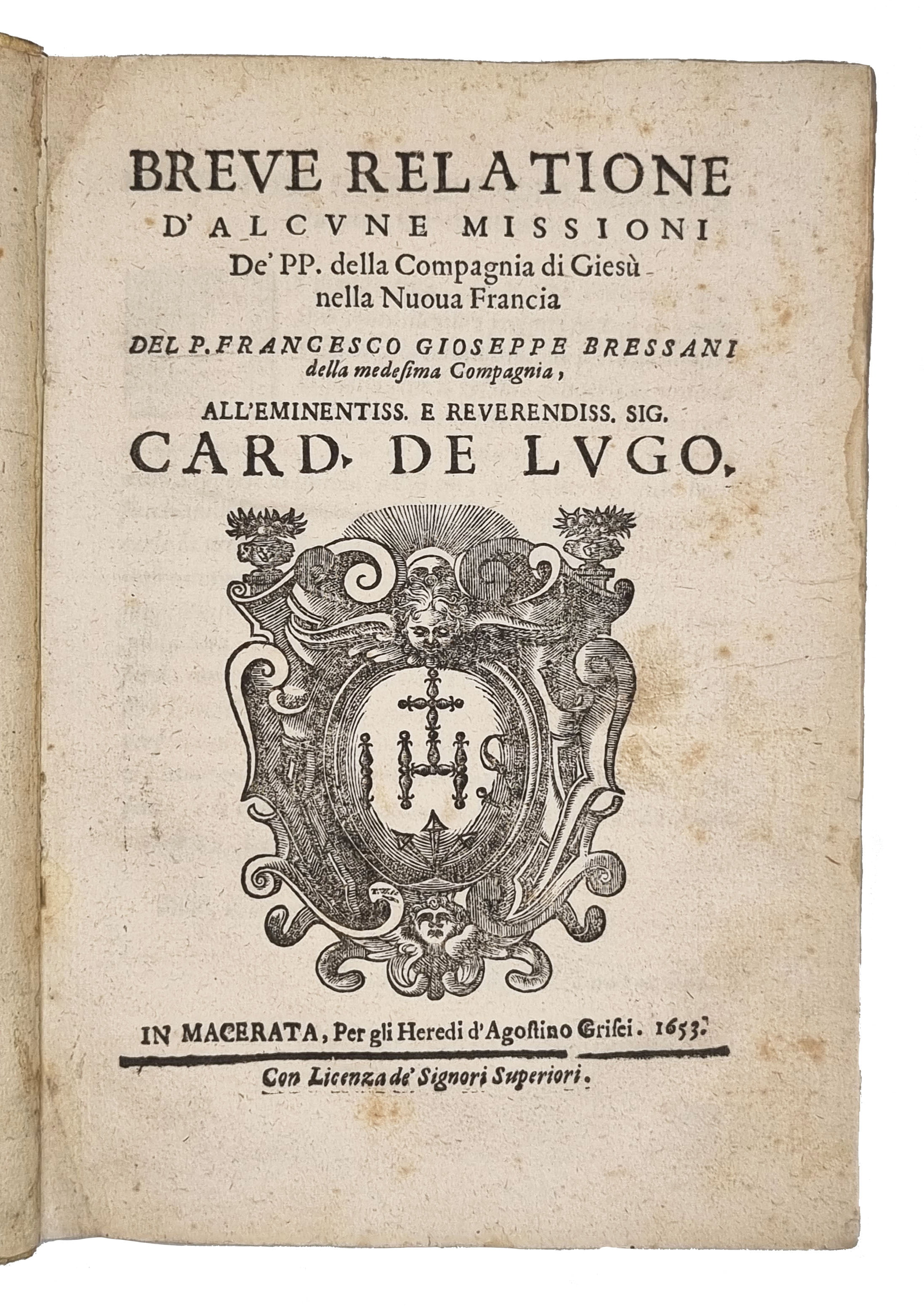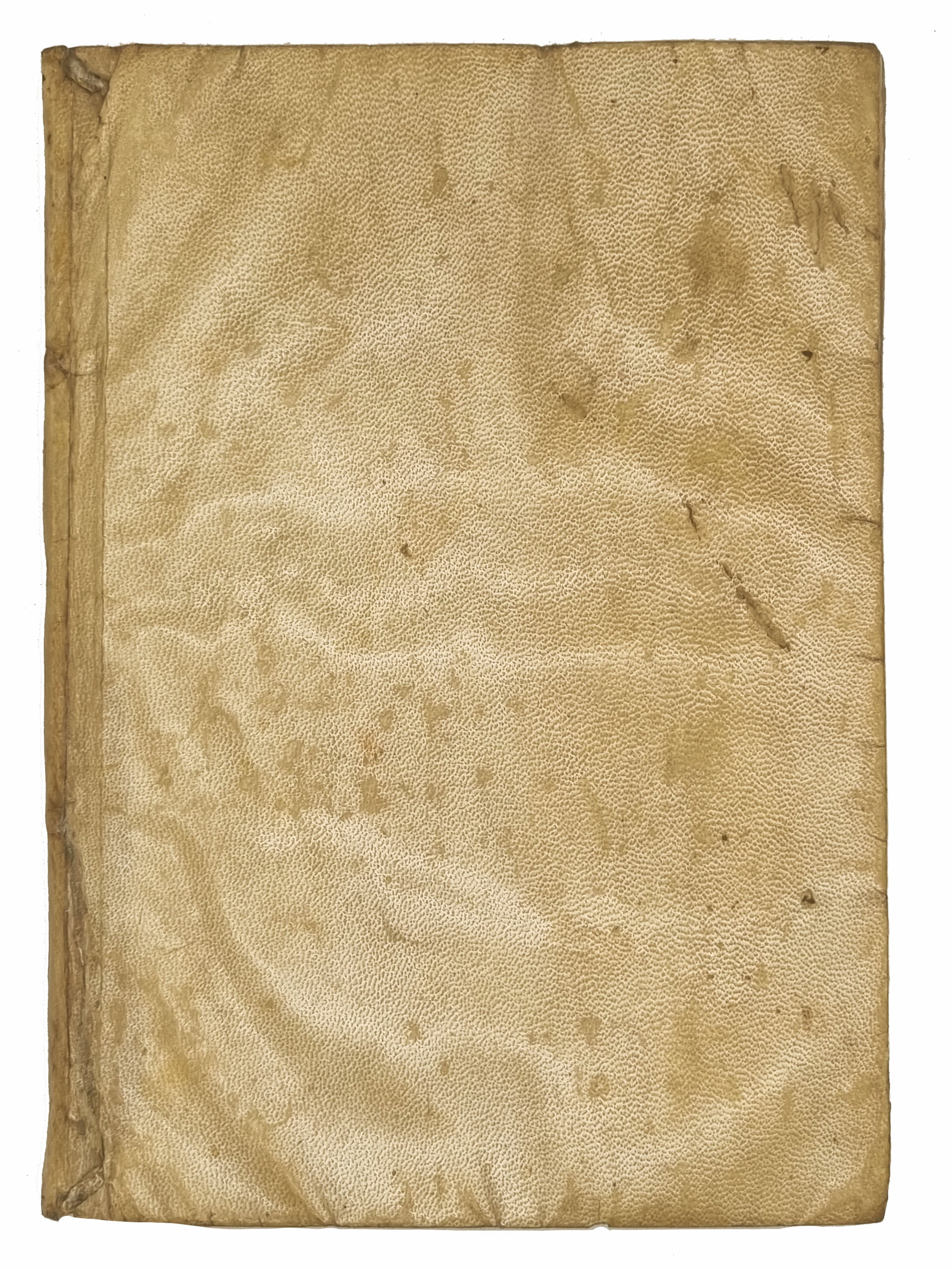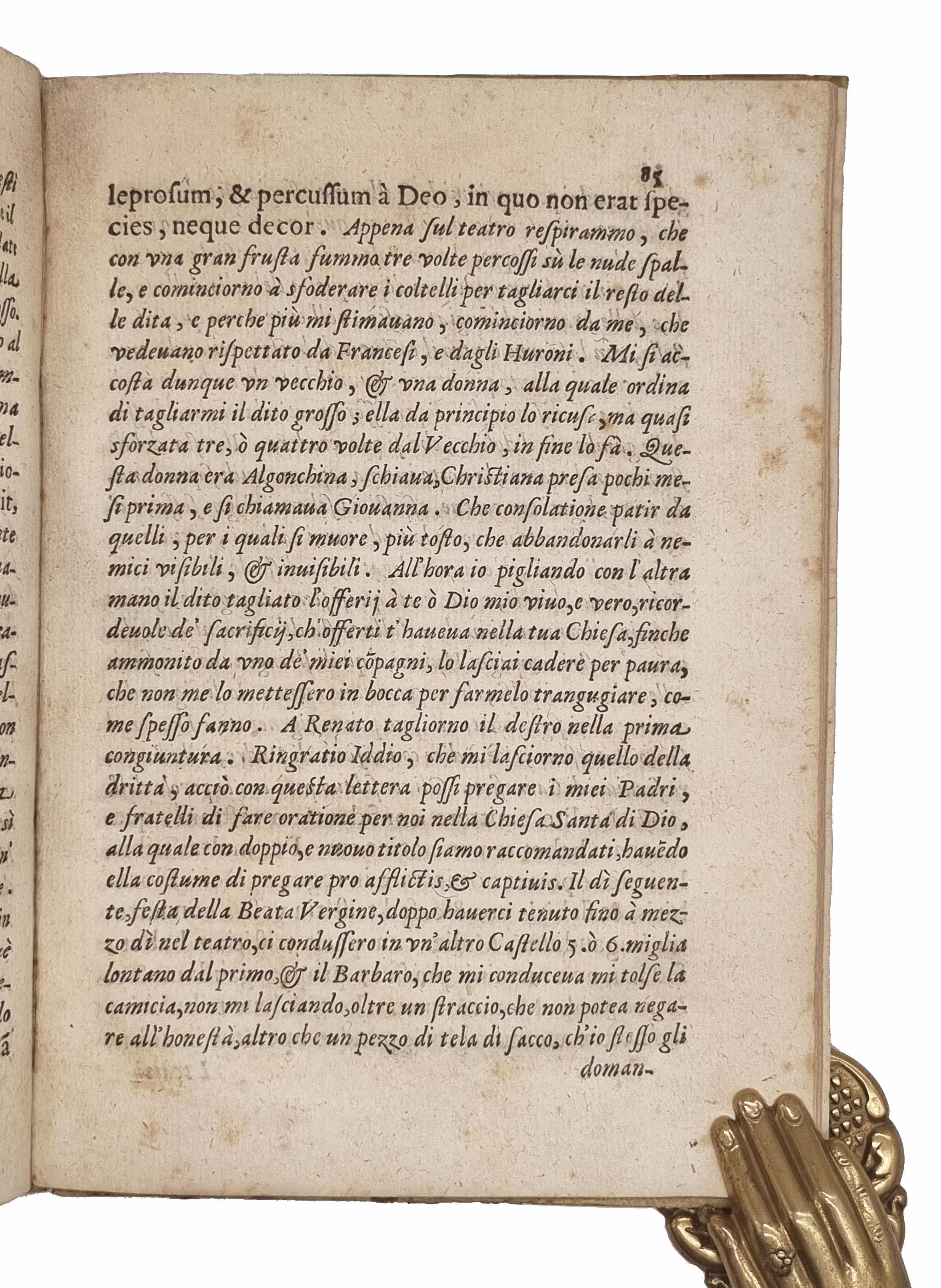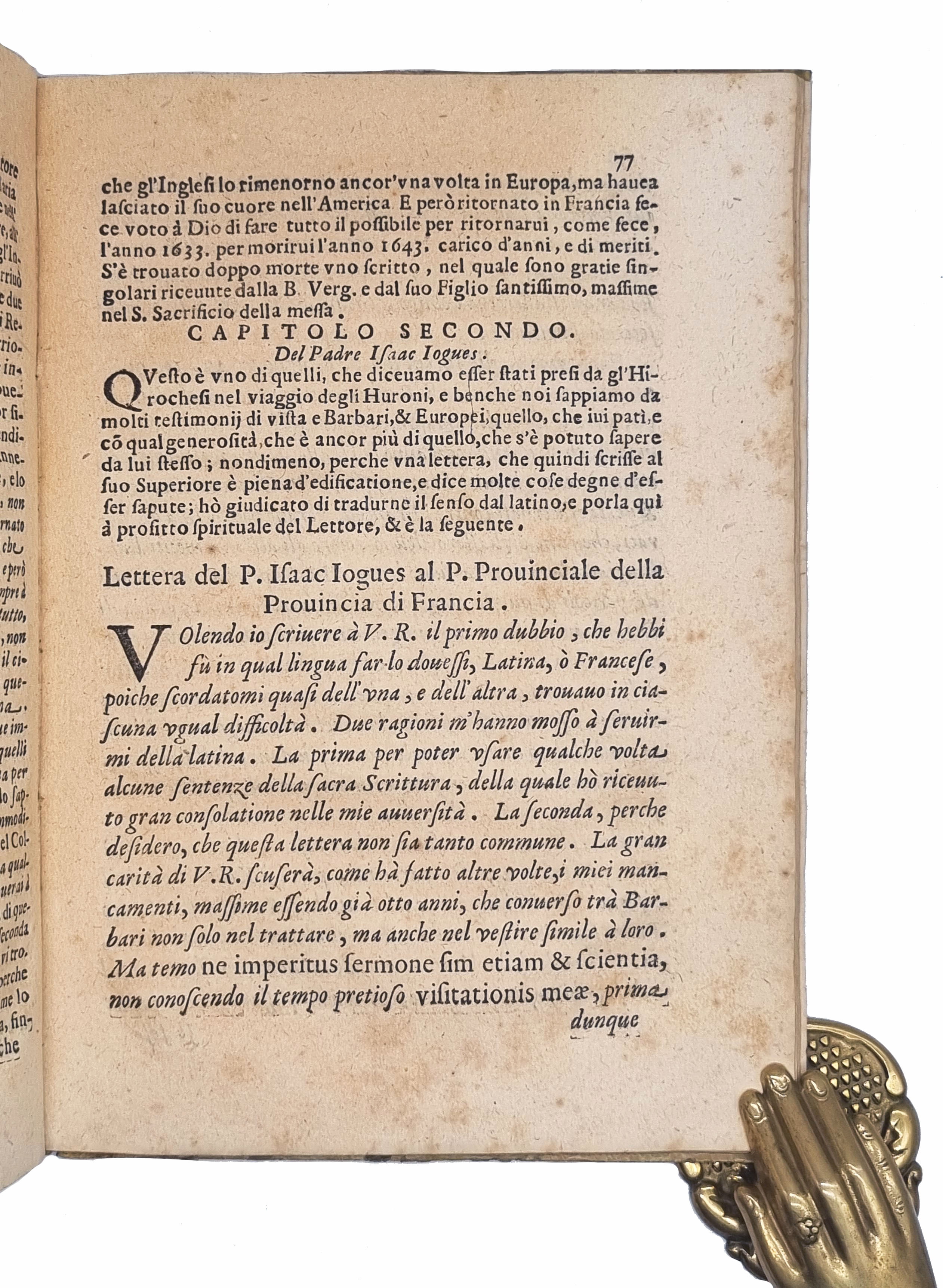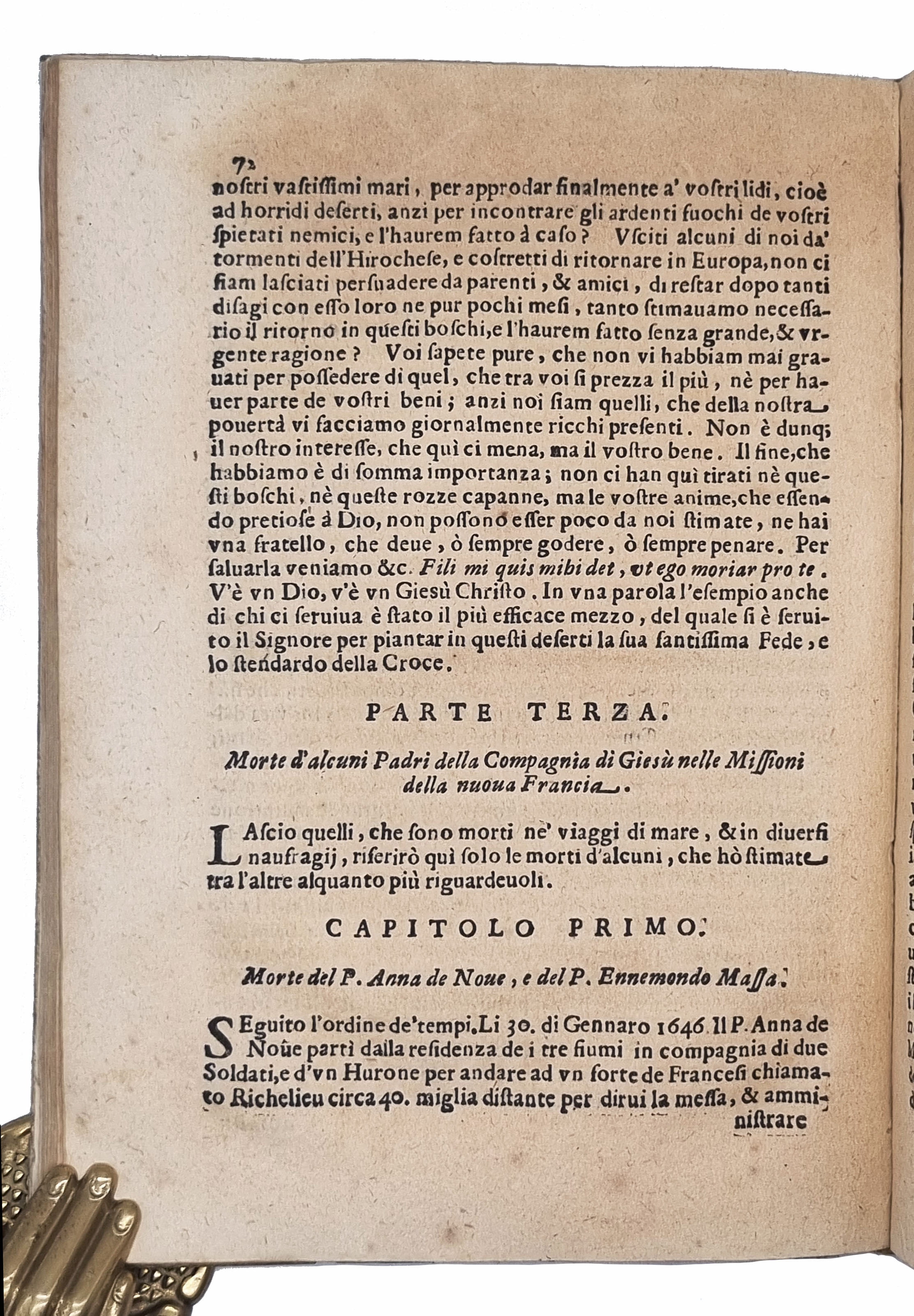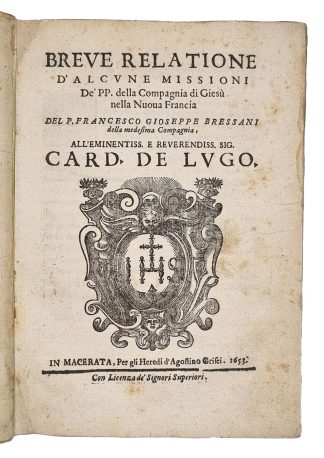BRESSANI, Francesco Giuseppe
JESUIT MISSIONS IN CANADA
Breue relatione d\\\\\\\'alcune missioni de\\\\\\\' PP. della Compagnia di Giesù nella Nuoua Francia del P. Francesco Gioseppe Bressani
Macerata, Per gli heredi d\\\\\\\'Agostino Grisei, 1653£13,500.00
FIRST EDITION. 4to. pp. [iv], 8, ff. 9-10, pp. 11-127, [i]. ², A , B² B , (-B1) C-Q . Roman letter, with some Italic. Large woodcut printer’s device on t-p, floriated woodcut initials, modern bookplate of J. A. Freilich on pastedown. Age yellowing, light browning and spotting in places. A very good copy entirely unsophisticated in contemporary vellum over thin boards.
Exceptionally rare and important first edition of this work by the Jesuit Bressiani giving the first general description in Italian of the Jesuit missions in Canada among the Huron and Iroquois tribes. “Francesco Giuseppe Bressani published his Breve Relatione in Italian in 1653. It is the only part of the voluminous Jesuit Relations or Relations des Jésuites that is in Italian. .. It is a factual account of the years Bressani spent in New France as a missionary among the settlers and Native people. At the same time it is a vision of the possibilities of future Italian settlement in the New World. As a result Bressani’s chronicle may be examined as a testament to his religious faith and to his imagination in constructing the image of a martyr.” Joseph J. Pivato.
Bressani was born in Rome in 1612 and in 1626 joined the Society of Jesus. In 1642 Bressani was in Canada where he first worked in the French settlement of Quebec and the following year was sent to Trois Rivières to the Algonquin mission. In April, 1644, on his way west to the Huron missions he was captured by the Iroquois who killed one of his Huron companions and then took Bressani, a French boy, and five other Huron captives south into the territory which is now New York State. They tortured him for two months, before he was ransomed by Dutch settlers at Fort Orange and sent back to France in November, 1644. The following year he was back in Canada working at the Huron Missions until their destruction by Iroquois attacks four years later. In 1649 a war-party of some twelve hundred warriors attacked Huronia. By this time many Iroquois had firearms which they had procured from the Dutch on the Hudson River, the Jesuits were forced to retreat east to the territory of Quebec. Bressani, however, continued to work with the scattered and fugitive Hurons for some months back in the original Quebec settlements. Only his failing health forced him to return to Italy in 1650. He opens his description with reference to Pope Urban VIII letter of 1638 that forbade the enslavement of Natives in the New World. As subjects of the missions the natives were recognised as human beings with souls that needed to be saved. It is clear that Bressani shared these ideals and enthusiastically followed them in his mission work.
The Breve Relatione is organised into three parts. The first presents a very positive image of the missions: Bressani describes the geography and vegetation of Canada, and then deals with the Native people. The second describes the conversion of the Native people and the many difficulties encountered by the Jesuits who arrived to convert them. The third gives us graphic details about the suffering, torture, and martyrdom of the missionaries including the author. Bressani goes into great detail describing the society of the Hurons. He lists their food and feast celebrations, their communal singing and dances, explains marriage practices and compares them to those of the ancient Jews. He points out that in their system of government tribal chiefs are determined by succession by way of the mother’s line. In their system of justice crimes of theft and murder are dealt with through fines and gift giving for reparation. It is clear that he admires these people for their honesty, hospitality, and inherent sense of right and wrong. He also describes the many obstacles the Jesuits encountered: the harsh climate, river rapids and waterfalls, the dangers of the journeys due to Iroquois attacks, the problems with the different Indian languages, conflict with the Indian medicine men, and the plagues which killed large groups of Natives.
In the second part he includes his letter to his superior in which he recounts his capture by the Iroquois, his tortures, forced travels, beatings, starvation, mutilations, and final rescue. The third and final part of the Breve Relatione deals with the sufferings of the missionaries at the hands of the Iroquois in which Bressani gives several accounts of torture and martyrdom, reproduced from other volumes of the Jesuit Relations written in French, including the martyrdom of Father Isaac Jogues, Father Charles Garnier, and Noel Chabanel. He also recounts the fate of Father Anne de Noue who died of cold when he got lost in the snow. “In the Italian we can almost hear Bressani’s voice as he argues that their (the Hurons) intellectual capabilities and skills are as good as those of any bright Europeans. They are capable of learning and knowledge and of showing faith. What we find in the first chapters of Breve Relatione is an image of the noble savage, long before this idea was expressed by Jean Jacques Rousseau in 1778.” Joseph J. Pivato.. An excellent copy of this exceptionally rare work.
Not in BM STC It. C16th. Church 524. Sabin 7734 \\\\\\\"very rare” JFB B493.In stock


